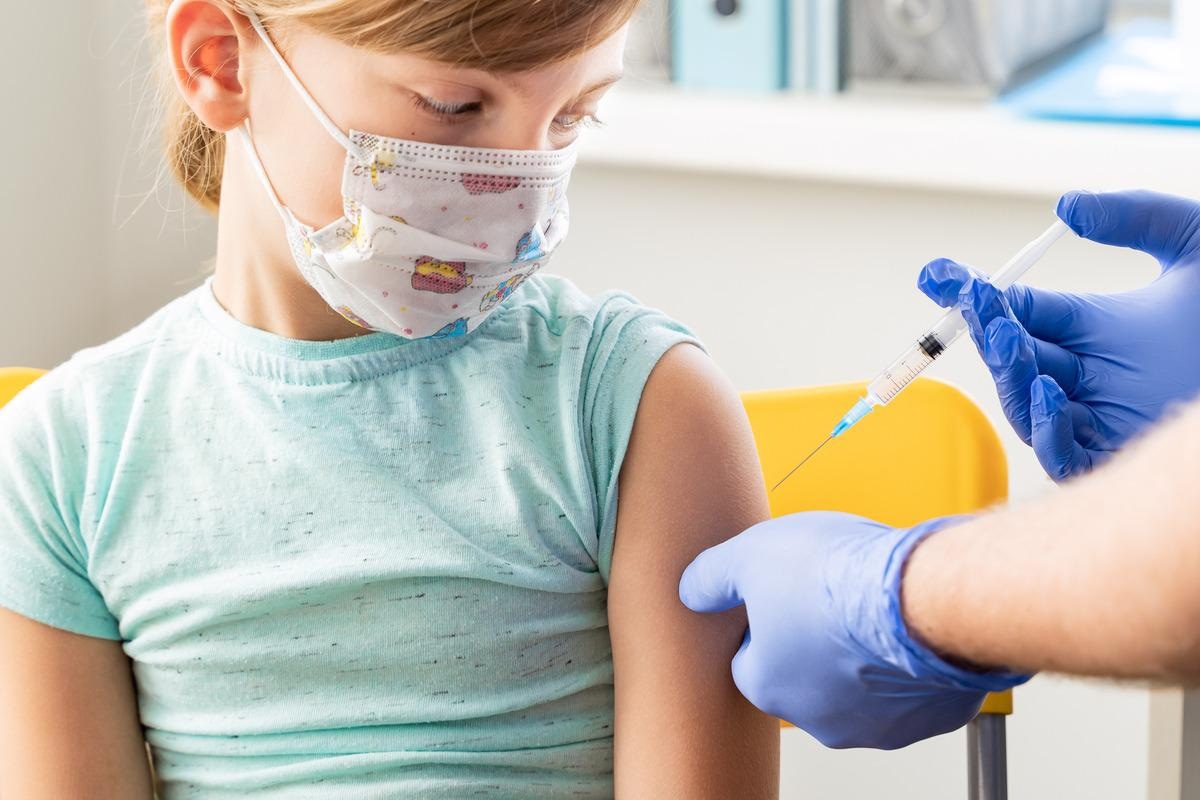In a recent study published in the Emerging Infectious Diseases (EID) journal as an early release article, researchers investigated the differences in first dose coverage of coronavirus disease 2019 (COVID-19) vaccination among children aged five to 11 years in the United States (US).
 Study: Disparities in First Dose COVID-19 Vaccination Coverage among Children 5–11 Years of Age, United States. Image Credit: Ira Lichi/Shutterstock
Study: Disparities in First Dose COVID-19 Vaccination Coverage among Children 5–11 Years of Age, United States. Image Credit: Ira Lichi/Shutterstock
Although severe COVID-19 and hospitalization are more prevalent in adults, they can also occur in children. Among more than 8,300 children admitted to hospitals with severe COVID-19 in America, nearly one-third were admitted to the intensive care unit (ICU). While children might be less prone to severe disease, they may serve as carriers of the disease. Thus, vaccinating youngsters against severe acute respiratory syndrome coronavirus 2 (SARS-CoV-2) is crucial.
The CDC advised vaccinating children of five to 11 years of age in the US with the Pfizer-BioNTech SARS-CoV-2 vaccine on November 2, 2021. However, the variations in the vaccine uptake among these age groups are not clearly understood.
About the study
In the present research, the scientists evaluated SARS-CoV-2 vaccine uptake data among American children aged five to 11 years between November 2, and December 31, 2021.
By January 21, 2022, the team procured the vaccination data reported to CDC from federal entities, pharmacies, and jurisdictions via the immunization information system, Vaccine Administration Management System (VAMS), and direct data submission. Daily and cumulative total numbers of youngsters receiving the first SARS-CoV-2 Pfizer-BioNTech vaccine dose were calculated from the data. The vaccinated children were stratified based on age groups, jurisdictions, and race or ethnicities.
Results
The results show that nearly 24% of US children aged between five and 11 years received their first dose of the SARS-CoV-2 vaccine during November and December 2021. A quick initial uptake was observed during the first two weeks after CDC recommended vaccinating children aged five years or older against SARS-CoV-2 using the Pfizer-BioNTech COVID-19 vaccine.
Vaccination coverage was 9.1% and 56.4% in Mississippi and Vermont, respectively, indicating vaccination coverage varied depending on the jurisdiction. Vaccination coverage was the highest in the nine to 11 years age group at 26.8%, and the lowest in the seven to eight years age group at 23.5%, and the five to six years age group at 20.3%, suggesting vaccination coverage also varied among different age groups within five to 11 years. Vaccination coverage was 23.7% for males and 24.1% for females in the five to 11-year-old group, indicating vaccine coverage did not differ much by gender.
Among the children aged between five and 11 years, non-Hispanic White, Hispanic/Latino, and non-Hispanic Black children constitute 51.2%, 23%, and 14%, respectively. Nonetheless, only 8%, 21.7%, and 49.1% of the non-Hispanic Black, Hispanic/Latino, and non-Hispanic White children, respectively, received the first dose of COVID-19 vaccine during the study period. This inference suggests that kids from the non-Hispanic White, Hispanic/Latino, and non-Hispanic Black categories were underrepresented among youngsters in the five to 11 years age group vaccinated with the first dose of SARS-CoV-2 vaccine in the US. By contrast, non-Hispanic Asian children made up 11.4% of the vaccine recipients, albeit accounting for just 5.6% of the US population aged 5 to 11 years.
Conclusions
According to the study findings, SARS-CoV-2 vaccination coverage among US children aged 5 to 11 years differed significantly by age group, jurisdiction, and race or ethnicity. While Asian American children were overrepresented among youngsters who received the first dose of the SARS-CoV-2 vaccine, Hispanic, White, and Black children were underrepresented. This observation was probably due to Asian Americans being less likely to be poor than other racial and ethnic categories. The Hispanic and Black communities were the poorest in the US. Further, parents with low-income face challenges in taking time off to get their kids vaccinated against COVID-19 or providing care for children who develop side effects to vaccination.
The geographical variation in SARS-CoV-2 vaccine coverage among children was probably associated with the parental vaccination status. This inference was based on the fact that jurisdictions with low vaccine coverage for children, such as Maine and Vermont, followed a similar pattern for adults. In addition, children between five and six years had lower vaccination rates than those aged between nine and 11 years.
However, the study failed to justify the age-based variation in vaccine coverage. According to a recent survey, this trend might be because of parental hesitancy to vaccinate younger children. Thus, it can be summarized that a significant factor in enhancing vaccination coverage among children is educating the importance and improving the confidence of COVID-19 vaccination among parents.
Overall, the study underscores that jurisdictions across the US should create and implement strategic steps to expand COVID-19 vaccination programs, raise vaccine confidence, and lower impediments to SARS-CoV-2 vaccination, along with ensuring vaccine equity.